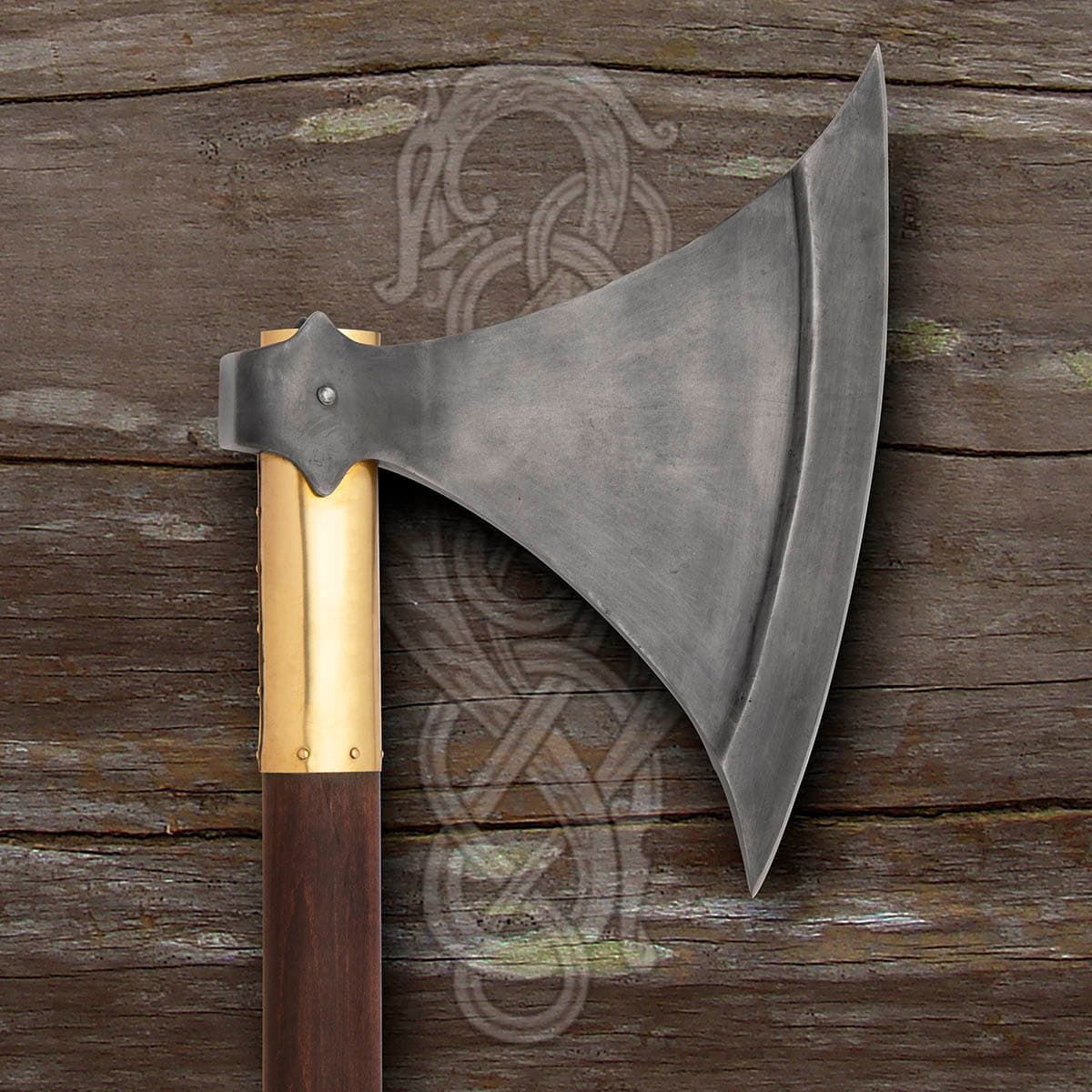
Tools of the Raid
Great axes were a staple of Northern European warfare from the 9th through 11th centuries. They could reach over six feet in length and weigh up to six pounds, typically sporting light, thin blades. The two most prevalent examples being the earlier Type L and the later Type M as categorized by Petersen's Typology. It was in this time that the humble axe stood shoulder to shoulder with the mightiest spear and sword. Some of the most elite warriors of the period, from fearsome Viking Berserkers to King Harold Godwinson's Huscarls fighting for England at the Battle of Hastings, famously wielded large two handed Dane Axes. The name itself is just one example suggestive of the level of integration between Saxon and Scandinavian cultures by the mid 11th century.
Viking Influence in England
The melding of Viking colonists from what are today Norway, Sweden and Denmark with the Saxons who settled England five centuries earlier left an indelible mark on the culture, laws and genetic trajectory of the country that can still be seen today. Cities like York and Durham in the North of England would be forever changed or first founded as results of these tumultuous times. Centuries of strife and violence on the island of Britania had begun to stabilize to some degree through the process of mutual assimilation. However, another people descended from the blending of Vikings and a former province of Rome would put a permanent end to this order. The Normans had arrived.
The End of an Age
By the time of Hastings in 1066, the Type M Dane Axe had evolved into a man-sized broad bladed cutting weapon having more in common with a meat cleaver than a woodcutting axe. The Bayeux Tapestry famously depicts one of King Harold's Huscarls allegedly removing the head of a Norman Knight's horse with a single stroke. Such was the power of these massive, yet deceptively light and nimble tools, most weighing between two and five pounds. Despite this, and unfortunately for the Saxon and Scandinavian peoples of England, the horse would prove to be the dominant force on the battlefield for the next 9 centuries.
-Written by: Lord Wallis the Weird








